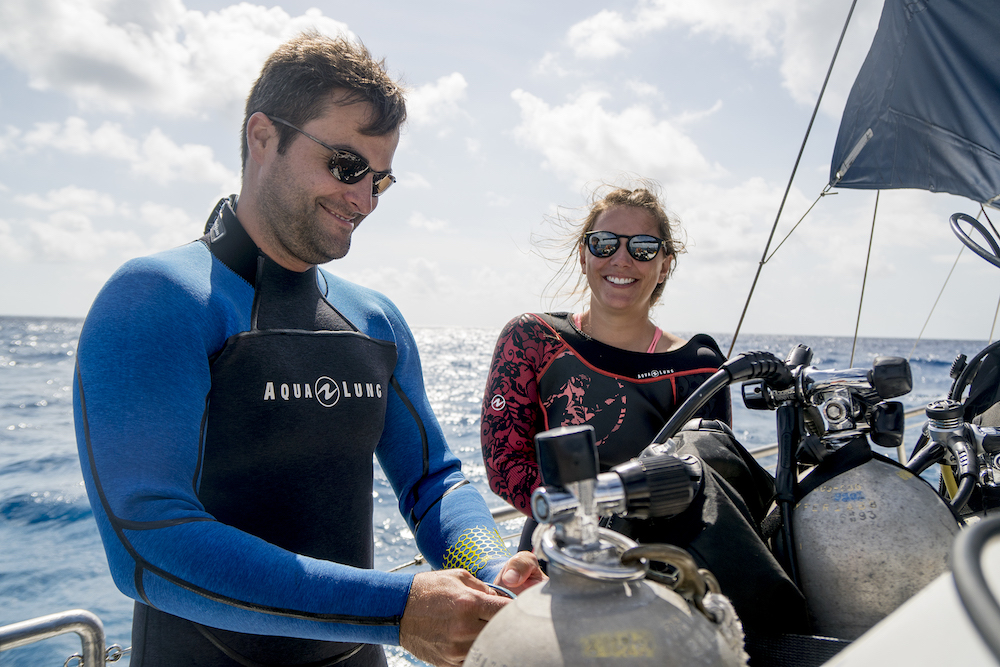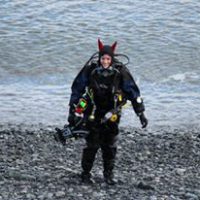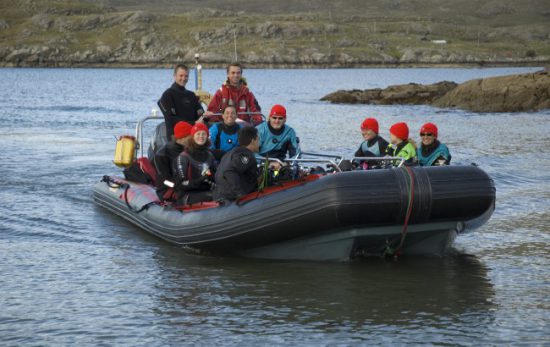Boats open the door to a world of diving that’s inaccessible from shore. If you’re about to discover the attraction, read on for a brief introduction of what to expect on a boat dive.
We’ve broken down this massive subject by types of boat. Depending on where you’re diving will likely determine the type of boat you use to scuba dive.

Small Inflatables and RIBs (aka RHIB or zodiac)
From portable dinghies to bigger Rigid Inflatable Boats (RIBs), these are fast, maneuverable, and can reach places larger boats can’t — making them popular for liveaboard shuttles and day trips.
Before boarding, you’ll need to assemble your kit, don your suit, and answer any calls of nature… there’s little space on a RIB, and even less privacy! They’re also open to the elements, so pack reef-friendly sunscreen, a windproof jacket, and keep non-waterproof essentials in a dry bag. Divers typically sit on the inflatable tubes (keep dive knives away!) or seats, with scuba sets often secured to a rack — stow the rest of your gear in a mesh bag to save space and avoid mix-ups.
RIB diving is less stable and very hands-on, so be ready to help others when kitting-up (and accept help yourself!). Entering the water is a simple roll backwards off the tubes, but exiting is more interesting; you’ll normally need to pass your weights and scuba set to the crew before finning yourself back onto the boat. It’s technique over strength, and gets easier with practice!

Hard Boats
Charter boats can travel further for multi-dive day trips, carrying more divers and equipment than RIBs. They often provide limited shelter, an on-board toilet (or ‘head’), plus hot drinks and snacks.
Liveaboards are floating hotels that accommodate divers for days or even weeks at a time, providing uninterrupted, effortless access to the most remote sites and the ultimate scuba vacation.
On hard boats, dive decks are more spacious and stable than on a RIB, with benches and allocated spaces to stow and assemble your equipment. The briefing will explain how and when to prepare for the dive — if you’re asked to kit-up in order, make sure you wait your turn to give others space. Keep any dedicated photography tables and rinse tanks free of other items (especially masks with defogger, as this can damage cameras), and don’t use mask rinse tanks if you favor the ‘spit’ method!
Entering the water is usually a giant stride from the side or stern (back) of the boat. When exiting the water, lucky divers have a lift — just stand on the platform and enjoy the ride up. Otherwise, it’s a traditional ladder with a helping hand from the crew. ’T’ ladders have open sides and can be climbed fins-on, but standard ladders need fins removing first. Always give divers space in case they fall, and be careful not to get caught under the ladder if the boat rises and falls.
While de-kitting, be mindful of wet and dry areas — also watch out for slippery surfaces. Water supplies may be limited, so use as little as possible when showering or rinsing gear. Before using the toilet, check the rules — it’s usually prohibited to flush paper or use them when the boat’s stationary.
Particularly on liveaboards, you could be away from land for long periods, without phone or internet, so extra preparation and insurance is essential — read more liveaboard tips here and here.

Tips for All Dive Boats
- Take only what you need — even big boats have limited space. Check everything’s packed and working beforehand, and bring a save-a-dive kit (there are no shops at sea). Always keep your gear tidy and well-secured to prevent damage or injury; a tidy boat is a safe boat!
- Be on time and ask permission before boarding. Pay attention to boat and dive briefings, and the crew’s instructions — including safety and roll call procedures, smoking or no-go areas, and local cultures and customs (like what to wear).
- Chat to the crew and guides — they’ll answer questions and share local knowledge, and if you’re new to boats, they’ll lend an extra hand. Just don’t distract them if they’re busy mooring or picking up divers!
- Never enter the water until the crew says so, and keep away from the propeller. Using a DSMB and noting down your boat’s identifying flags or signs will help you return safely after surfacing. One of the joys of boat diving is not having to swim back to shore — but do keep your eyes on the boat as it approaches to pick you up!
- If you’ve never been on a boat, try some shorter trips first. If you’re seasick, stay hydrated and rested, focus on the horizon, and get plenty of fresh air mid-ship (where movement is less). Always check any seasickness medication is suitable for divers — DAN has more tips here.
If you want to learn more about boat diving, including nautical terms, equipment storage, entry and exit techniques and much more, start your PADI Boat Diver specialty course today.



